- Preparing the Bed
- Clean the Area
- Choose a Sunny Spot
- Prepare the Soil
- Create Raised Beds
- Add Mulch
- Space the Plants
- Water the Plants
- Protect from Frost
- Maintain the Bed
- Choosing a Suitable Location
- Autumn Planting of Strawberries
- 1. Choose a sunny location
- 2. Prepare the soil
- 3. Plan your planting layout
- 4. Plant the strawberries
- 5. Mulch the bed
- 6. Water and fertilize
- 7. Protect from pests
- Selection of Strawberry Varieties
- 1. Climate and Growing Conditions
- 2. Day-Neutral or June-Bearing
- 3. Flavor and Taste
- 4. Disease Resistance
- 5. Yield and Productivity
- 6. Growth Habit
- Essential Steps
- Soil Preparation
- 1. Clear the Bed
- 2. Test the Soil
- 3. Amend the Soil
- 4. Till the Soil
- 5. Create Raised Beds
- 6. Install Drip Irrigation
- 7. Mulch the Bed
- 8. Prepare for Planting
- Amending the Soil
- 1. Test the soil
- 2. Adjust the pH
- 3. Add organic matter
- 4. Incorporate fertilizer
- 5. Remove weeds
- 6. Prepare the bed
- Creating Raised Beds
- Planting the Strawberries
- Step 1: Choose the Right Strawberry Varieties
- Step 2: Create Mounds or Rows
- Step 3: Planting the Strawberry Plants
- Step 4: Spacing the Plants
- Step 5: Watering the Plants
- Step 6: Mulching
- Step 7: Fertilizing
- Step 8: Provide Support
- Step 9: Regular Maintenance
- Ensuring a Successful Harvest
- 1. Proper Soil Preparation
- 2. Choosing the Right Varieties
- 3. Proper Spacing
- 4. Adequate Watering
- 5. Mulching
- 6. Pest and Disease Control
- 7. Fertilization
- 8. Harvesting and Storage
- Question-answer:
- What are the essential steps for preparing the bed for autumn planting of strawberries?
- When is the best time to plant strawberries in autumn?
- Should I remove any existing plants or weeds before planting strawberries in autumn?
- What should I add to the soil before planting strawberries in autumn?
- How deep should I till the soil for planting strawberries in autumn?
- What spacing should I use when planting strawberries in autumn?
- Video: 7 Tips To Increase Your Strawberry Yields
Growing strawberries in the autumn season can be a rewarding experience, but it requires proper planning and preparation. Preparing the bed is one of the most crucial steps in ensuring a successful harvest. By following a few essential steps, you can create an ideal environment for your strawberry plants to thrive.
First and foremost, you need to select a suitable location for your strawberry bed. Strawberries prefer full sun, so choose an area that receives at least six to eight hours of direct sunlight per day. Additionally, make sure the soil is well-draining to prevent waterlogged roots. If necessary, improve drainage by incorporating organic matter such as compost or well-rotted manure.
Next, it’s important to clear the site of any weeds, grass, or other vegetation that may compete with your strawberry plants for nutrients and moisture. Use a garden fork or tiller to loosen the soil and remove any large rocks or debris. You can also add a layer of weed barrier fabric to minimize weed growth and make maintenance easier.
After preparing the soil, it’s time to amend it with nutrients to support healthy strawberry growth. Incorporate a balanced fertilizer with a higher phosphorous content to encourage root development and flowering. Follow the manufacturer’s instructions for application rates, taking care not to overfertilize. Additionally, check the soil pH and adjust it if necessary. Strawberries thrive in slightly acidic soil with a pH between 5.5 and 6.5.
Preparing the Bed
Clean the Area
Before planting strawberries in the autumn, it is essential to clean the area where the bed will be prepared. Remove any weeds, rocks, or debris, as they can interfere with the growth of the strawberry plants. This will help create an optimal environment for the plant’s roots to develop.
Choose a Sunny Spot
Strawberries thrive in full sunlight, so select a location for the bed that receives at least six to eight hours of direct sunlight every day. This will ensure that the plants get enough light to produce healthy and flavorful berries.
Prepare the Soil
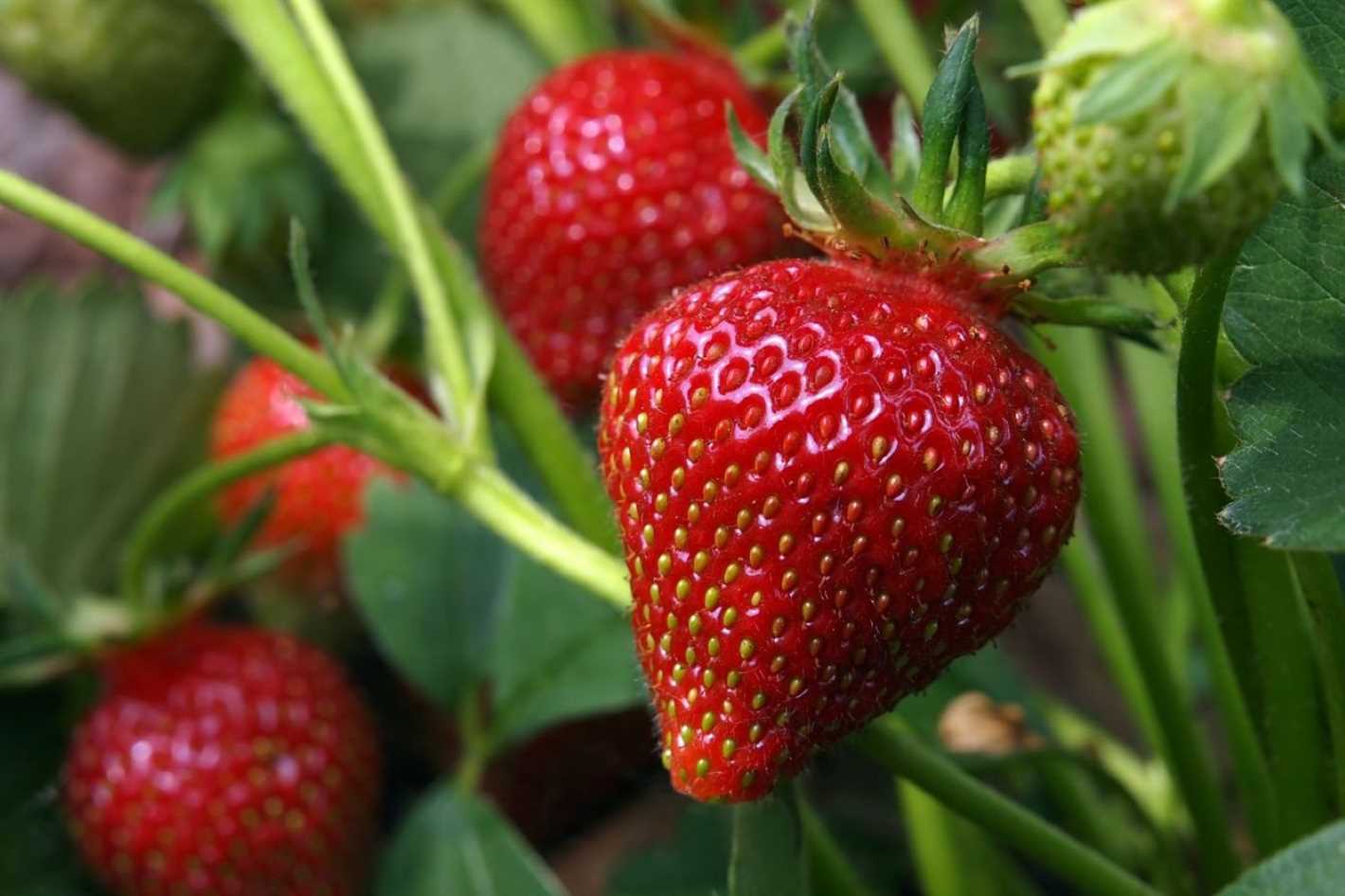
The soil should be well-drained and have a pH level between 5.5 and 6.5, which is slightly acidic. Test the soil’s pH level and make adjustments, if necessary, by adding organic matter such as compost or peat moss. It is also recommended to enrich the soil with balanced fertilizer to provide necessary nutrients for the plants.
Create Raised Beds
Creating raised beds for strawberries helps with drainage and prevents waterlogging, which can lead to root rot. Build raised beds that are about 8 to 12 inches high and 24 to 36 inches wide. This will provide ample space for the plants to grow and spread.
Add Mulch
Applying mulch to the bed will help conserve moisture, suppress weed growth, and regulate soil temperature. Spread a layer of straw or pine needles around the plants, taking care not to cover the crown of the plant. This will also prevent direct contact of the berries with the soil, reducing the risk of rot and disease.
Space the Plants
When planting strawberries, make sure to space the plants properly to allow for adequate air circulation and growth. Place the plants about 12 to 18 inches apart in rows that are 3 to 4 feet apart. This spacing will ensure that the plants have enough space to grow without overcrowding.
Water the Plants
After planting, water the strawberry plants thoroughly to settle the soil around the roots. Keep the bed consistently moist, but be careful not to overwater, as this can lead to root rot. Regularly check the moisture level of the soil and adjust watering accordingly.
Protect from Frost
If the temperatures start to drop below freezing, protect the strawberry plants from frost by covering them with frost blankets or straw. This will help insulate the plants and prevent damage to the flowers and developing fruit.
Maintain the Bed
Throughout the autumn season, continue to monitor the bed and remove any weeds or pests that may appear. Also, be sure to provide regular fertilization and watering as needed. This will help promote healthy growth and ensure a successful harvest of delicious strawberries in the coming months.
Choosing a Suitable Location
When it comes to planting strawberries in the autumn, choosing a suitable location is crucial for their successful growth and harvest. Here are some essential factors to consider when selecting the right spot for your strawberry bed:
- Sunlight: Strawberries require a minimum of 6 to 8 hours of direct sunlight daily. Choose a location that receives ample sun exposure throughout the day, preferably facing south or southeast.
- Soil Drainage: Strawberries thrive in well-drained soil. Avoid areas with heavy clay or compacted soil that tends to retain water. Opt for a site with loose, loamy soil that drains well.
- Air Circulation: Good air circulation can help prevent diseases and promote healthy growth. Select a spot that is not too cramped or surrounded by dense foliage, which can restrict airflow.
- Proximity to Water Source: While strawberries don’t require excessive watering, it’s important to have a water source nearby for occasional irrigation during dry periods. Consider the proximity of the bed to a water source for convenience.
By taking these factors into consideration and selecting a suitable location, you can provide your strawberries with the optimal growing conditions they need to produce a successful harvest in the autumn.
Autumn Planting of Strawberries
Autumn is the ideal time to prepare your bed for planting strawberries. By taking a few essential steps, you can ensure a successful harvest in the coming year. Here are some important tips for autumn planting:
1. Choose a sunny location
Strawberries thrive in full sun, so select a spot in your garden that receives at least 6 hours of direct sunlight each day. This will help ensure that your plants receive the necessary light to grow and produce an abundant harvest.
2. Prepare the soil
Before planting, it’s important to prepare the soil to provide the best growing conditions for your strawberries. Remove any weeds or grass from the area and loosen the soil with a garden fork or tiller. Add organic matter, such as compost or well-rotted manure, to improve drainage and fertility.
3. Plan your planting layout
Determine the spacing and row layout for your strawberry plants. Depending on the variety, strawberries should be planted 12-18 inches apart in rows spaced at least 2 feet apart. This will allow the plants to have enough room to grow and spread without overcrowding each other.
4. Plant the strawberries
Dig small holes for each strawberry plant, making sure the crown sits at soil level. Gently spread the roots out and backfill the hole, firming the soil around the plant. Water thoroughly after planting to settle the soil and provide moisture to the roots.
5. Mulch the bed
Apply a layer of mulch around the strawberry plants to help conserve moisture, suppress weeds, and regulate soil temperature. Straw, pine needles, or wood chips make excellent mulch materials. Spread the mulch evenly around the plants, taking care not to cover the crowns.
6. Water and fertilize
Keep the soil consistently moist, especially during dry periods, to ensure proper growth and fruit development. Water deeply and regularly, aiming for at least 1 inch of water per week. In the spring, once your plants start to grow, feed them with a balanced fertilizer to promote healthy foliage and fruit production.
7. Protect from pests
Strawberries can be susceptible to various pests, such as slugs, snails, and birds. To protect your plants, consider using organic pest control methods, such as copper tape or companion planting with herbs like thyme or marigolds. Netting or bird scare devices can also help deter birds.
Following these essential steps for autumn planting of strawberries will set you on the path to a bountiful harvest next year. With proper care and maintenance, you’ll be enjoying juicy and flavorful strawberries right from your own backyard!
Selection of Strawberry Varieties
When it comes to selecting strawberry varieties for your autumn planting, there are several factors to consider. Each variety will have its own unique characteristics and requirements, so it’s important to choose the right ones for your specific needs and growing conditions. Here are some key factors to keep in mind:
1. Climate and Growing Conditions
Different strawberry varieties thrive in different climates and growing conditions. Some are more suited to cooler regions, while others perform best in warmer areas. Consider your local climate and the specific conditions of your garden, such as soil type and amount of sunlight, when choosing strawberry varieties.
2. Day-Neutral or June-Bearing
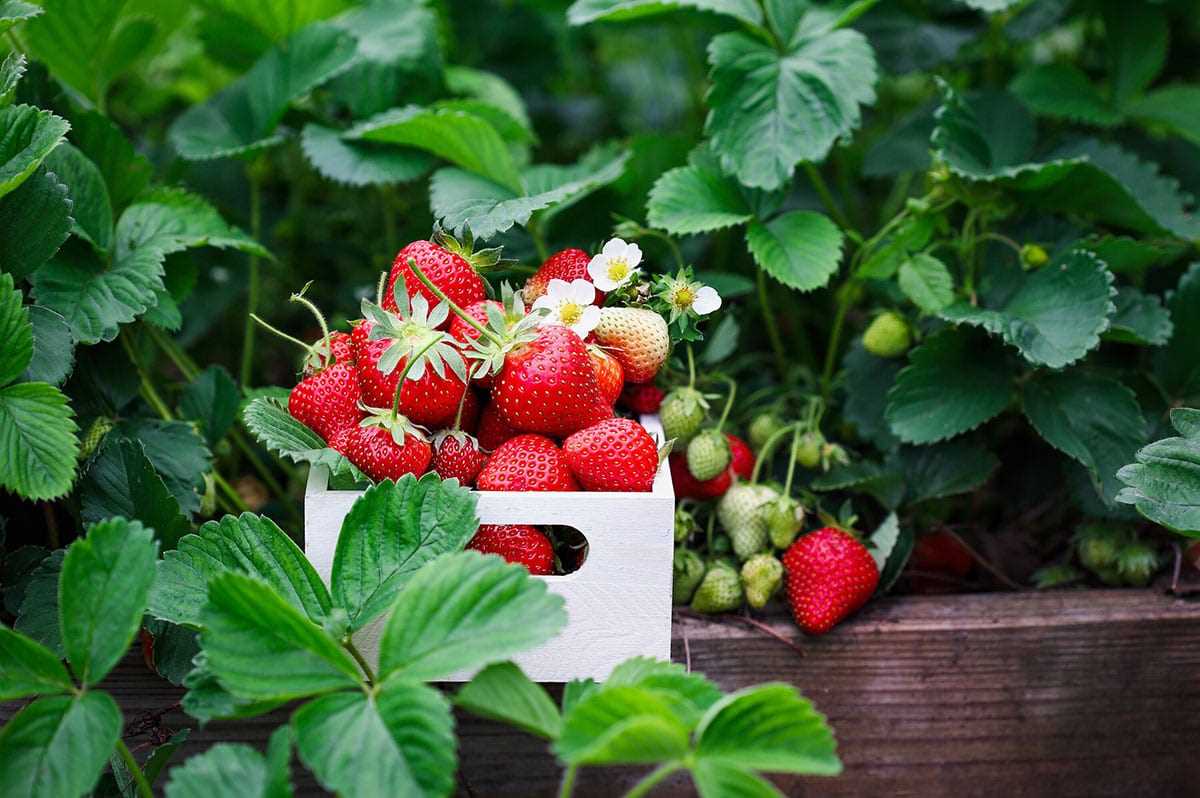
There are two main types of strawberry varieties: day-neutral and June-bearing. Day-neutral varieties produce strawberries continuously throughout the growing season, while June-bearing varieties produce a crop of strawberries in late spring or early summer. Decide which type is more suitable for your needs and preferences.
3. Flavor and Taste
The flavor and taste of strawberries can vary greatly between different varieties. Some varieties are sweeter and juicier, while others have a more tart or tangy flavor. Consider the flavor profile you prefer and choose varieties that align with your taste preferences.
4. Disease Resistance
Strawberries can be susceptible to various diseases, such as powdery mildew and verticillium wilt. To minimize the risk of disease and have a healthier crop, select varieties that are known for their disease resistance. This information can usually be found on the seed packet or plant label.
5. Yield and Productivity
The yield and productivity of strawberry varieties can vary widely. Some varieties produce larger quantities of strawberries, while others have smaller yields. Consider how many strawberries you want to harvest and choose varieties that are known for their high yield and productivity.
6. Growth Habit
Strawberry plants can have different growth habits, such as spreading or compact. Spreading varieties send out runners that can quickly cover a large area, while compact varieties stay more contained. Consider the available space in your garden and choose varieties with a growth habit that suits your needs.
By considering these factors and doing some research, you can select the strawberry varieties that are most suitable for your garden and preferences. Remember to also consider the specific recommendations and guidelines provided by local gardening experts or nurseries in your area.
Essential Steps
Preparing the bed for autumn planting of strawberries requires a few essential steps to ensure a successful harvest. Follow these guidelines to create the ideal conditions for your strawberry plants:
- Clear the bed: Remove any weeds, stones, or debris from the bed to ensure a clean and fertile growing environment for the strawberries.
- Amend the soil: Test the soil pH level and make any necessary adjustments to achieve a slightly acidic range of 5.5 to 6.5. Add organic matter such as compost or well-rotted manure to improve soil structure and fertility.
- Provide drainage: Strawberries prefer well-drained soil, so if your bed has poor drainage, consider incorporating sand or perlite to improve it. Ensure there is no standing water after watering or rainfall.
- Create raised beds or mounds: Raised beds or mounds allow for better drainage and can help prevent waterlogged roots. Aim for a raised height of around 6 to 8 inches to provide excellent drainage.
- Space the plants: Plan and measure the spacing between your strawberry plants to ensure adequate airflow and room for growth. Leave about 12 to 24 inches between each plant and maintain rows that are approximately 3 feet apart.
- Apply mulch: After planting, apply a layer of mulch around the strawberry plants to suppress weed growth, retain moisture, and regulate soil temperature. Straw, wood chips, or shredded leaves make excellent mulch options.
- Protect from frost: In colder regions, consider using frost protection measures such as row covers or straw to prevent damage to the strawberry plants during early autumn frosts.
- Monitor and maintain: Regularly check your bed for pests, diseases, and signs of nutrient deficiencies. Keep the soil well-watered but not soggy, and ensure the plants receive at least 6 hours of sunlight per day.
By following these essential steps, you can create a suitable bed for autumn planting of strawberries and increase your chances of a successful harvest the following year.
Soil Preparation
The first step in preparing the bed for autumn planting of strawberries is to ensure that the soil is properly prepared. This is essential for the strawberries to grow well and produce a bountiful harvest. There are several important steps to follow during soil preparation:
1. Clear the Bed
Remove any weeds, grass, or existing plants from the bed. These can compete with the strawberry plants for nutrients and space, so it is important to have a clean bed.
2. Test the Soil
It is important to test the soil to determine its nutrient content and pH level. Soil testing can be done using a kit or by sending a sample to a laboratory. This will help determine if any amendments are needed to create the ideal growing conditions for strawberries.
3. Amend the Soil
If the soil test reveals any deficiencies or imbalances, amendments can be added to correct them. Common amendments for strawberries include compost, well-rotted manure, and organic fertilizers. These amendments can improve the soil structure, provide essential nutrients, and adjust the pH level.
4. Till the Soil
Once the amendments have been added, the soil should be tilled to incorporate them thoroughly. Tilling helps break up compacted soil, mix in the amendments, and create a loose and friable planting bed for the strawberries.
5. Create Raised Beds
To improve drainage and prevent waterlogging, it is a good idea to create raised beds for the strawberries. This can be done by mounding up the soil in rows or building raised beds using wooden boards or other materials. Raised beds also provide better air circulation around the plants, reducing the risk of diseases.
6. Install Drip Irrigation
Strawberries need consistent moisture, especially during the fruiting period. Installing a drip irrigation system can ensure that the plants receive adequate water without wetting the foliage excessively, which can lead to disease problems. Drip irrigation also helps conserve water by delivering it directly to the roots.
7. Mulch the Bed
To suppress weeds, retain moisture, and regulate soil temperature, it is important to mulch the bed. Organic mulches like straw, wood chips, or pine needles can be spread around the strawberry plants, leaving a small gap around the crown to prevent rotting. The mulch should be about 2-3 inches thick.
8. Prepare for Planting
Before planting the strawberries, it is important to mark the locations where the plants will go. This can be done by creating planting rows or using a grid system. Proper spacing between plants is essential to ensure adequate air circulation and prevent overcrowding.
By following these essential steps for soil preparation, you can create an ideal growing environment for your autumn-planted strawberries and increase the likelihood of a successful harvest.
Amending the Soil
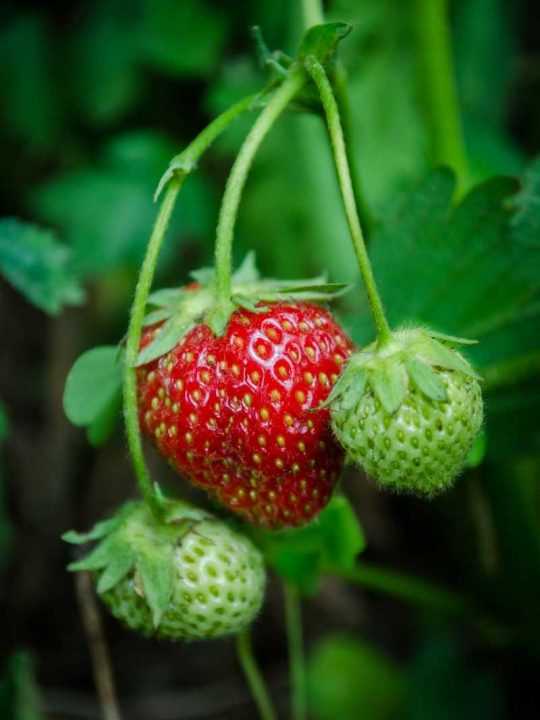
Before planting strawberries in the autumn, it is important to amend the soil to create optimal growing conditions for the plants. Here are some essential steps to take:
1. Test the soil
Start by testing the soil to determine its pH level and nutrient content. Strawberries prefer a slightly acidic soil with a pH between 5.5 and 6.5. You can use a soil testing kit or send a sample to a professional laboratory for analysis.
2. Adjust the pH
If the soil pH is too high or low, you will need to adjust it accordingly. To lower the pH, you can incorporate elemental sulfur or organic materials like peat moss or pine needles. If the pH is too low, you can add lime or wood ash to raise it. Follow the recommended application rates based on your soil test results.
3. Add organic matter
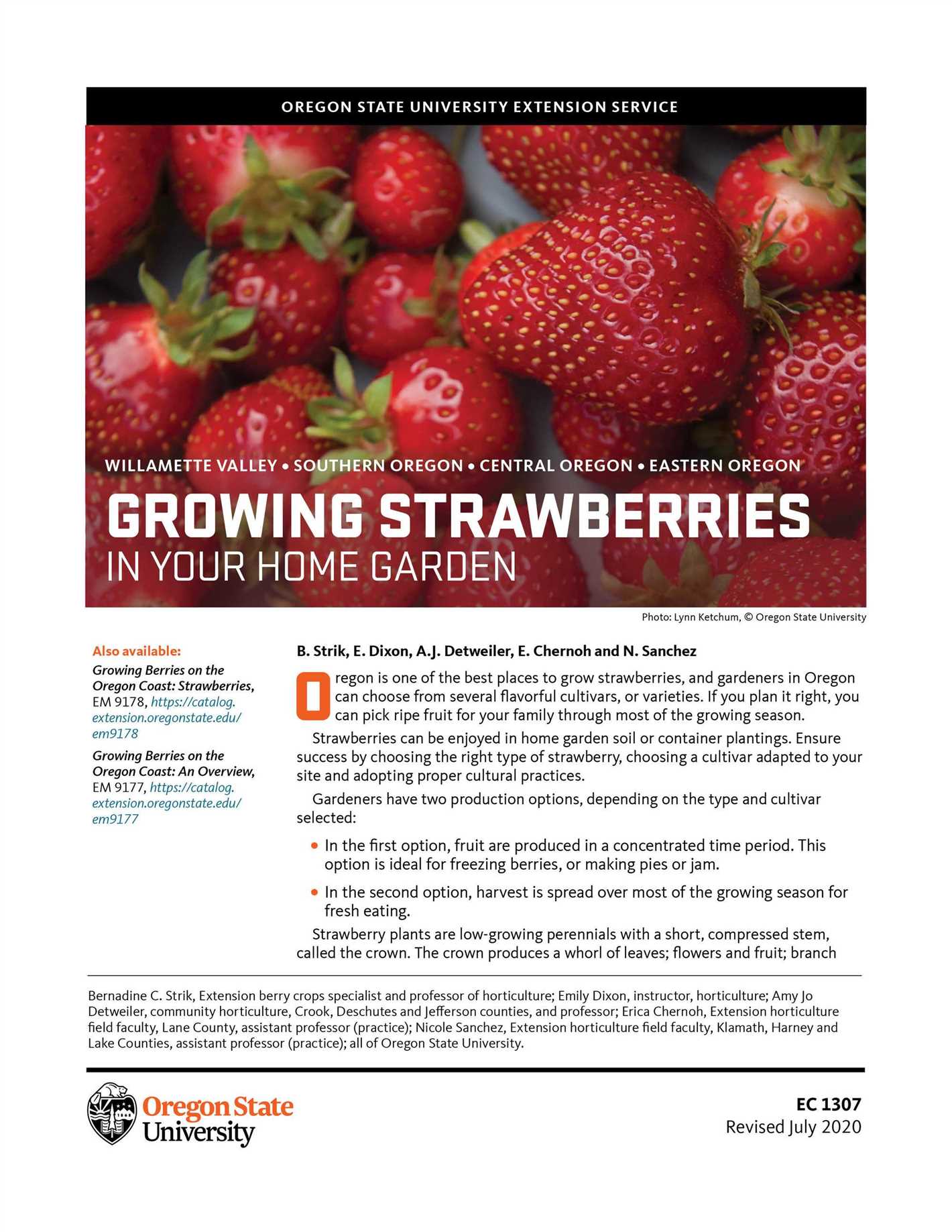
Adding organic matter improves soil structure, increases nutrient availability, and enhances water retention. Mix well-rotted compost, aged manure, or other organic materials into the soil. Aim for a ratio of 1 part organic matter to 2 parts soil.
4. Incorporate fertilizer
To ensure the strawberries receive adequate nutrition, incorporate a balanced slow-release fertilizer into the soil before planting. Choose a fertilizer specifically formulated for fruiting plants and follow the recommended application rates.
5. Remove weeds
Remove any existing weeds from the planting area to prevent competition for nutrients and water. Use a garden fork or hand tool to carefully remove weeds, taking care not to disturb the soil too much.
6. Prepare the bed

Once the soil has been amended, prepare the bed by loosening it with a garden fork or tiller. Remove any large rocks or debris and level the surface. Create raised beds or mounded rows to improve drainage and prevent waterlogging.
By following these steps to amend the soil, you can create a favorable growing environment for your strawberry plants and ensure a successful harvest in the autumn.
Creating Raised Beds
Raised beds are a great option for growing strawberries in your garden. They provide several benefits such as improved drainage, increased soil warmth, and better access for tending to the plants. Here are the essential steps for creating raised beds for autumn planting of strawberries:
- Choose a location: Select a sunny spot in your garden with well-drained soil. Strawberries require at least 6-8 hours of direct sunlight daily to thrive.
- Measure and mark: Determine the desired size and shape of your raised bed. Use stakes and string to mark the perimeter of the bed.
- Clear the area: Remove any existing vegetation, rocks, or debris from the marked area. This will ensure a clean and fertile space for your strawberries to grow.
- Prepare the soil: Dig the soil within the marked area to a depth of at least 6-8 inches. This will loosen the soil and allow the roots of the strawberry plants to penetrate easily.
- Add organic matter: Mix in compost or well-rotted manure to improve the soil fertility and drainage. Aim for a ratio of 1 part organic matter to 3 parts soil.
- Shape the bed: Use a rake or hoe to shape the soil into a raised bed. The bed should be approximately 6-8 inches high with slightly tapered sides.
- Smooth the surface: Level the surface of the bed using the back of a rake or a garden roller. This will create an even planting surface for your strawberries.
- Install edging: If desired, install edging materials such as wood, brick, or stones around the perimeter of the bed. This will help maintain the shape and prevent soil erosion.
- Water the bed: Before planting your strawberries, thoroughly water the raised bed to ensure proper moisture levels. This will help the plants establish quickly.
- Plant the strawberries: Finally, plant your strawberries in the prepared raised bed according to the recommended spacing and depth for the variety you are growing.
By following these steps, you will create an ideal environment for your strawberry plants to grow and produce a bountiful harvest. Enjoy the fruits of your labor in the coming spring!
Planting the Strawberries
Once you have prepared the bed and ensured that the soil is in optimal condition, it is time to start planting your strawberries. Follow these essential steps for a successful harvest:
Step 1: Choose the Right Strawberry Varieties
Before planting, it is important to choose the right strawberry varieties that are suitable for your region and climate. Consider factors such as day length requirements, disease resistance, and flavor. Some popular strawberry varieties include ‘Seascape’, ‘Albion’, and ‘Chandler’.
Step 2: Create Mounds or Rows
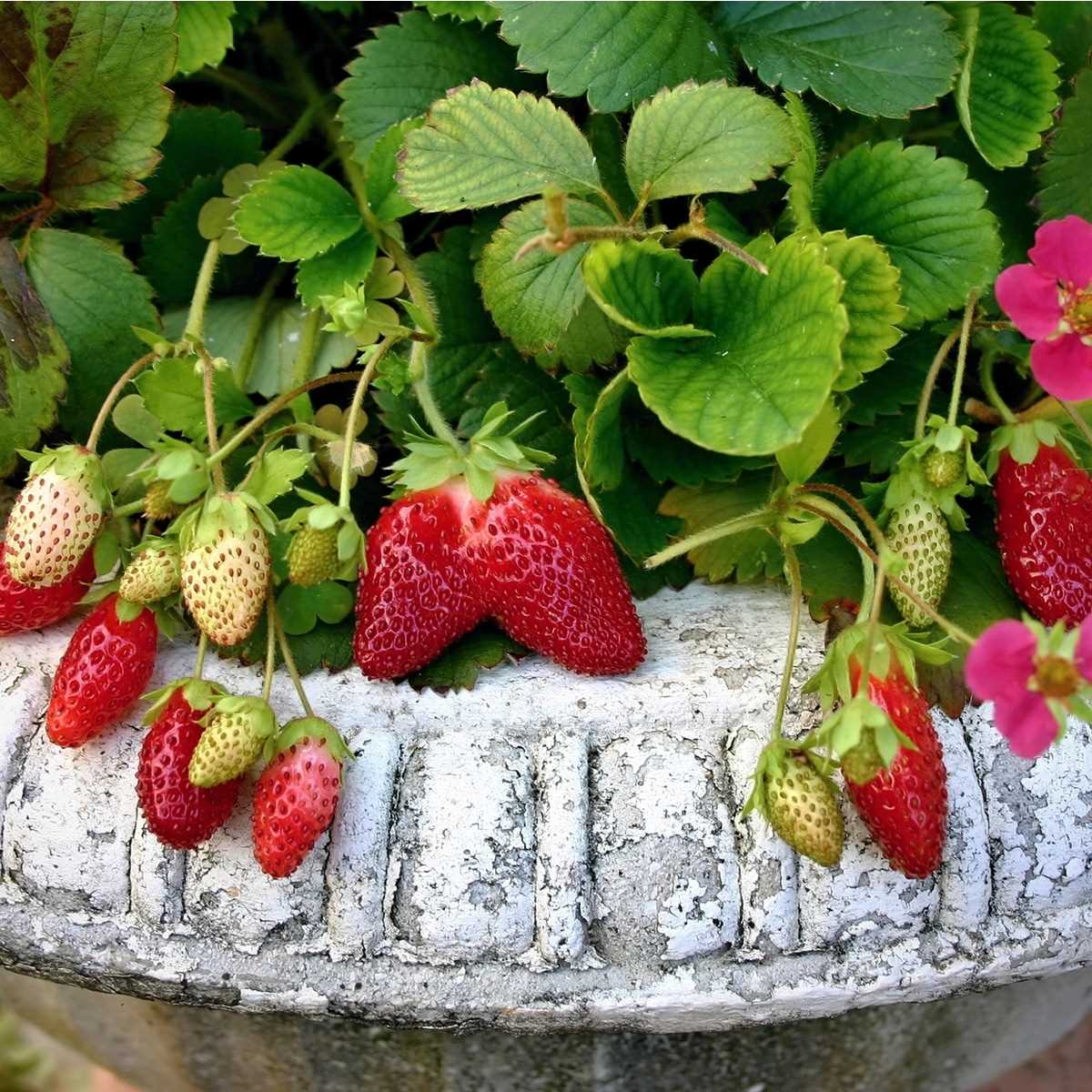
To ensure proper drainage and prevent waterlogging, create mounds or rows in your prepared bed. Space them out according to the specific requirements of your chosen strawberry varieties.
Step 3: Planting the Strawberry Plants
Gently remove the strawberry plants from their containers or packaging. Be careful not to damage the roots. Place the plants in the mounds or rows, ensuring that the crowns are level with or slightly above the soil surface.
Step 4: Spacing the Plants
Space the strawberry plants according to the recommended distance for your chosen varieties. Typically, they are spaced around 12 to 18 inches apart within rows, with rows spaced about 2 to 3 feet apart.
Step 5: Watering the Plants
After planting the strawberry plants, water them thoroughly to settle the soil and provide moisture to the roots. Avoid over-watering, as this can lead to root rot.
Step 6: Mulching
Apply a layer of mulch around the strawberry plants to suppress weed growth, retain moisture, and regulate soil temperature. Straw or pine straw is commonly used as mulch for strawberries.
Step 7: Fertilizing
Once the strawberry plants have been planted and watered, apply a balanced fertilizer according to the recommended rates. This will provide essential nutrients for healthy growth and fruit production.
Step 8: Provide Support
If you are planting trailing or vining strawberry varieties, consider providing support such as stakes or trellises. This will help keep the plants upright and facilitate better air circulation.
Step 9: Regular Maintenance
Throughout the growing season, make sure to regularly weed the strawberry bed, monitor for pests and diseases, and provide adequate water and nutrients. This will ensure the best possible conditions for your strawberry plants to thrive and produce a bountiful harvest.
By following these essential steps, you will be well on your way to growing healthy and delicious strawberries in your autumn garden. Enjoy the fruits of your labor once harvest time arrives!
Ensuring a Successful Harvest
1. Proper Soil Preparation
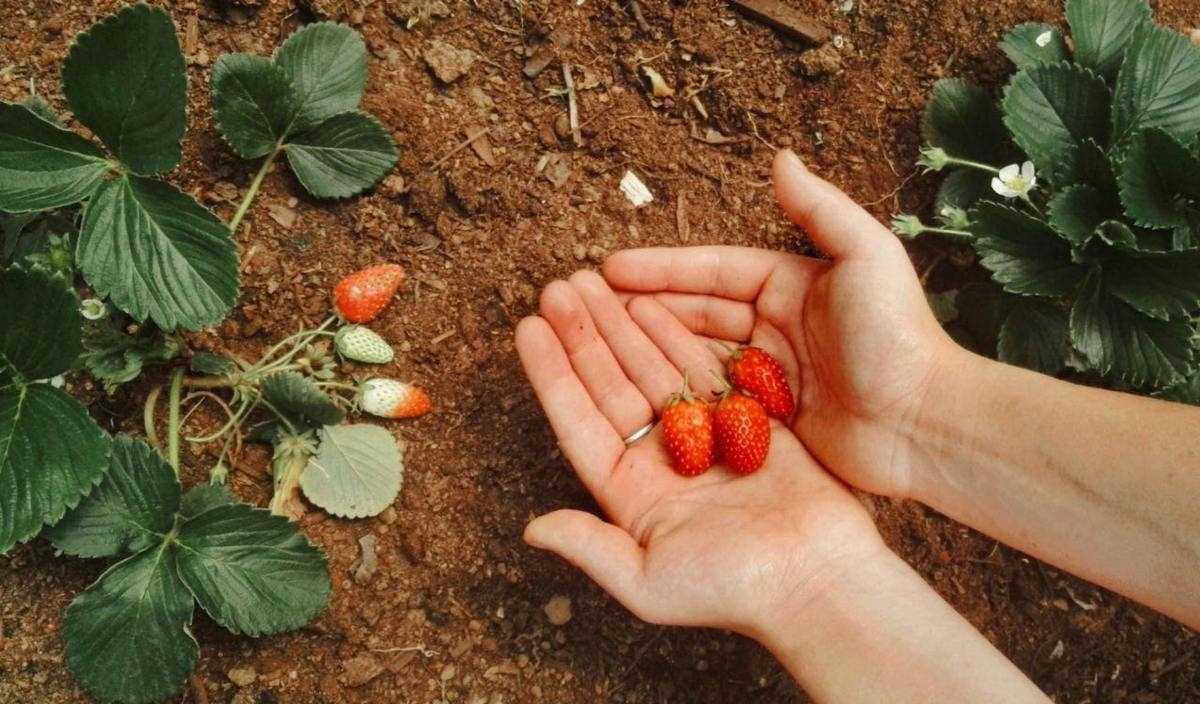
Before planting your strawberries, it is important to prepare the soil properly. Start by removing any weeds or debris from the planting area. Then, loosen the soil using a garden fork or tiller to ensure good drainage and root penetration.
Test the pH of the soil and adjust it if necessary. Strawberries prefer slightly acidic soil with a pH range of 5.5 to 6.5. You can lower the pH by adding peat moss or sulfur, and you can raise it by adding lime.
2. Choosing the Right Varieties
Not all strawberry varieties are suitable for autumn planting, so it is important to choose the right ones. Look for varieties that are specifically recommended for late-season planting, such as ‘Seascape’ or ‘Everest’. These varieties are known for their ability to establish and produce fruit in cooler temperatures.
Consider the climate and growing conditions in your area as well. Some varieties are more tolerant of cold weather or disease resistance, so choose accordingly.
3. Proper Spacing

When planting strawberries, it is important to give them enough space to grow and spread. Strawberry plants should be spaced about 12 to 18 inches apart in rows that are 2 to 3 feet apart. This spacing allows for good air circulation and reduces the risk of disease.
4. Adequate Watering
Strawberries need consistent moisture, especially during the growing season. Water the plants thoroughly after planting and continue to water regularly, especially during dry spells. Be careful not to overwater, as strawberries are susceptible to root rot. Watering in the morning allows the plants to dry out during the day, reducing the risk of fungal diseases.
5. Mulching
Mulching is important to retain soil moisture, suppress weed growth, and protect the strawberry plants during winter. After planting, apply a layer of straw or straw-like mulch around the plants, leaving the crown exposed. This mulch will provide insulation and help prevent frost damage.
It is important to use clean straw or mulch to avoid introducing diseases or pests to the garden. Replace the mulch in the spring to maintain its effectiveness.
6. Pest and Disease Control
Regularly inspect the plants for pests and diseases. Common strawberry pests include slugs, snails, aphids, and spider mites. Use organic pest control methods whenever possible, such as handpicking or using insecticidal soap.
To prevent diseases, avoid overhead watering and ensure good air circulation around the plants. Remove any infected or damaged leaves or fruits immediately to prevent the spread of diseases.
7. Fertilization
Provide your strawberry plants with the necessary nutrients by fertilizing them regularly. Apply a balanced fertilizer, such as a 10-10-10 or 12-12-12 formula, according to the package instructions. Avoid over-fertilizing, as it can lead to excessive foliage growth at the expense of fruit production.
Consider using organic fertilizers and amendments, such as compost or fish emulsion, to improve soil fertility and promote overall plant health.
8. Harvesting and Storage
When the strawberries are ripe, harvest them by gently picking the fruits off the plants. It is best to pick them in the morning when they are cool and fully ripe.
If you have harvested more strawberries than you can consume immediately, store them in the refrigerator. Rinse them briefly with cold water, remove any green caps, and place them in a breathable container lined with paper towels to absorb excess moisture.
Remember to enjoy the delicious fruits of your labor and share them with friends and family!
Question-answer:
What are the essential steps for preparing the bed for autumn planting of strawberries?
The essential steps for preparing the bed for autumn planting of strawberries include removing any existing plants or weeds, tilling the soil to a depth of 8-10 inches, adding organic matter such as compost or manure, and adjusting the pH level of the soil if necessary. It’s also important to ensure proper drainage and spacing of the plants.
When is the best time to plant strawberries in autumn?
The best time to plant strawberries in autumn is typically 4-6 weeks before the first expected frost. This allows the plants to establish their roots before winter. It’s important to check the specific recommendations for your region, as the ideal planting time may vary.
Should I remove any existing plants or weeds before planting strawberries in autumn?
Yes, it’s important to remove any existing plants or weeds before planting strawberries in autumn. This helps reduce competition for nutrients and space. Make sure to remove the entire root system of the plants or weeds to prevent regrowth.
What should I add to the soil before planting strawberries in autumn?
Before planting strawberries in autumn, you should add organic matter such as compost or manure to the soil. This helps improve the soil’s fertility and drainage. It’s also a good idea to test the pH level of the soil and adjust it if necessary, as strawberries prefer slightly acidic soil with a pH of around 6.0-6.5.
How deep should I till the soil for planting strawberries in autumn?
For planting strawberries in autumn, it’s recommended to till the soil to a depth of 8-10 inches. This helps loosen the soil and create a better environment for the roots to grow. Avoid excessive tilling, as it can lead to compacted soil and poor drainage.
What spacing should I use when planting strawberries in autumn?
When planting strawberries in autumn, it’s important to space the plants properly to allow for good air circulation and room for growth. The recommended spacing is typically 12-18 inches between plants, with rows spaced 2-3 feet apart. This can vary depending on the specific variety of strawberries you are planting, so it’s best to check the recommendations for your chosen variety.







